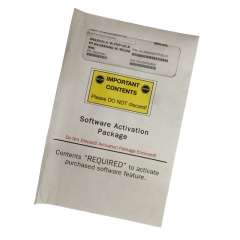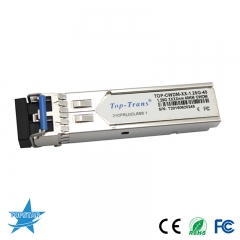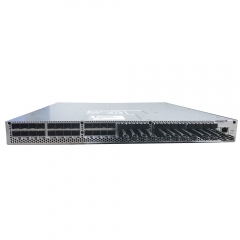Technologies like cloud computing have brought with them a storm of global data traffic, eating up large bandwidths demanded by applications such as video streams and online gaming. Studies show up to a 25-percent annual increase in data center interconnect applications, and this significantly high demand for data processing, computation and storage in data centers calls for increasingly high-speed optical transceivers to support growing data centers. Although 100G and 200G optical interconnects are widely used at present, 400G optical transceivers are expected to be a fundamental element in near future for both inter- and intra-Datacenter communications.
According to the Cisco’s Visual Networking Index, the global IP traffic in 2015 was at 72.5 EB per month and will nearly triple by 2020, to reach 194.4 EB per month. Consumer IP traffic will reach 162.2 EB per month and business IP traffic will surpass 32.2 EB per month by 2020.
In 2017, 100G optical transceivers are slowly turning in the new standard for the data center market. However, as IP traffic is continuously expanding, 100G interconnects won’t be enough for data centers to support the pressure of an endless traffic growth generated by new technology.
For this reason, different MSA (Multi Source Agreement) for 400G interconnect has been created to face the constantly growing IP traffic and the future needs of data centers. This article will introduce the 400G QSFP-DD and 400G OSFP optical transceivers.
400G QSFP-DD
The 400G QSFP-DD follows the same port densities system as the QSFP and QSFP28, but the QSFP-DD will support eight lanes instead of four lanes for the QSFP and QSFP28, which double the density.
Each of the eight lanes will operate a data rate up to 50Gb/s providing a 400Gb/s data speed and increasing the capacity of the QSFP28 by four. The 400G QSFP-DD published that the size of the optical transceivers enables to put 36 ports in one switch slot, accumulating 14.4 Tbp/s in one slot.
The great advantage of the new generation of QSFP is its backward compatibility with the QSFP and QSFP28. Indeed the QSFP-DD ports will also support 40G and 100G, which will facilitate and reduce the cost of the network migration toward the 400G.
400G OSFP
OSFP stands for Octal Small Form factor Pluggable. As the QSFP-DD, the OSFP has 8 lanes supporting 50G each. The OSFP is a new pluggable form factor, which is slightly wider and deeper than the QSFP family. Its size won’t enable the backward compatibility with the QSFP and QSFP28. However the OSFP MSA group says that it will be possible to build an adaptor (OSFP to QSFP) that supports other QSFP transceivers. In addition, due to its larger size, it will only have 32 ports in one switch slot, giving up to 12.8 Tbp/s in one slot.
The OSFP MSA, founded by Google, hopes that they will be able to turn the OSFP in supporting 800G by increasing the capacity of each lane to 100G.
Conclusion
According to the market forecast, the QSFP-DD should be ready before the OSFP, which is an advantage in addition to its backward compatibility with QSFP and QSFP28. However, the two modules will have slightly different applications and are both smaller than the two first generation of 400G transceivers, the 400G CDFP and 400G CFP8.
While 400G Optical Transceivers are a great technology advance for the future application on this market, many data centers are still upgrading their network to a 100G data rate thanks to the cost-effective and high performance 100G QSFP28 optical transceivers and cables.
TOPSTAR's products including SFP/ 10G SFP+/ 10G XFP, especially the 100GB QSFP28 100M to 100GB QSFP28 10KM and 100GB QSFP28 40KM SMF, and 100G CFP,CFP2,CFP4 for 5G network sulotion. Check our products on www.opticalmodulemanufacturers.com.
 +86 19860146913
+86 19860146913 dsale@topsfp.com
dsale@topsfp.com English
English русский
русский español
español العربية
العربية 中文
中文











